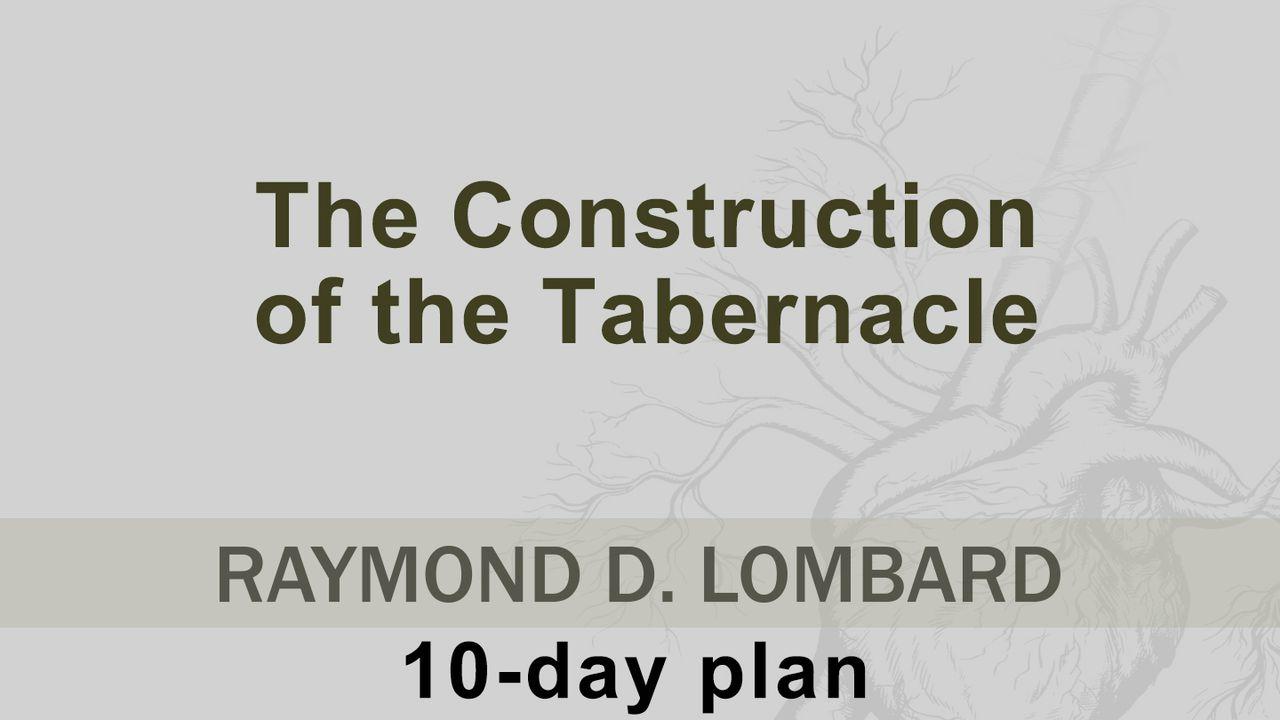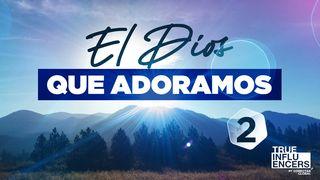The Construction Of The TabernacleMuestra

THE INNER COVERS
- THE TABERNACLE (Exod. 26:1, 6) - This set of curtains is called "the tabernacle" because it actually made up the ceiling of the tabernacle. This ten-part and multicoloured (purple, blue and red) curtain of fine twined linen with cherubim’s embossed on it, was only seen by the priests who did service in the tabernacle. It all points to Christ's hidden inner glory; namely His righteousness, divinity, majesty and humanity.
The light of the golden candlestick was not very bright in the Holy place and therefore the splendour of the tabernacle was not clearly visible. In the same way today, Christ's glory in the Church (the Holy place in the tabernacle) is invisible to a certain degree.
On the other hand, the Holy of Holies, on the other hand was illuminated by God's glory. The high priest could clearly behold the beauty and splendour of the tabernacle in that light. Christ's glory will and can only be seen when we are one day in heaven. In the glorious light of God we will behold Christ, in all His might, majesty and splendour: For now we see in a mirror, dimly, but then face to face. (1 Cor. 13:12). Only then will we see Him as He is (Rev. 1:13-16).
On the multicoloured tabernacle curtains, which portray Christ’ multiple splendour, cherubim were also portrayed. Cherubim speak of the intense unwavering judgement of Christ (Gen. 3:24). The Lord is not only a God of love but He is also the Judge of the world (Acts 17:31; John 5:22). Stephen Olford brings everything together nicely when he writes: “Thus, in this glorious inner curtain, we have a full-length portrait of God’s Son in His humanity, His divinity, His regality, His humility, and His severity in coming judgement. How incomparably glorious and victorious is the Christ of God!”
- THE TENT (Exod. 26:7; 36:14-18) – The tent of goat hair points to different aspects of Christ's life on earth.
The tent of goat hair was the result of God's choice of women to make it (Exod. 35:26). The Lord Jesus was, as far as His human nature is concerned, the resultant choice of women by God. Through the ages, from Eve's time, God singled out women through whom Christ eventually would come into the world. In the genealogy in Matthew 1:1-17, five women are named: Tamar, Rahab, Ruth, Bathsheba and Mary. Through them the humanity of God's Son was woven, just as the chosen women weaved the goat’s hair. The tent typifies Jesus' humanity (Heb. 2:16, 17).
The tent covering of goat’s hair was in eleven strips - ten were not visible and one was visible (Exod. 26:7, 9). Ten-elevenths of the tent covering was under rams and badgers hide. The eleventh panel that was in the front of the tabernacle was folded double and was therefore visible. When we look at the life of Christ, we quickly see the meaning of this. Slemming puts it this way for us: “Christ spent approximately thirty-three years on this earth, that is eleven threes. Ten elevenths of this life, which is thirty years, were spent in secret . . . Then, at the age of thirty, John said: ‘Behold’ and pointed the people to ‘the Lamb of God that taketh away the sin of the world’, and so, for the last eleventh of His life, in a three year ministry, He was revealed to the world – as what? The sin-offering, as John declared Him to be”.
The tent of goat hair speaks of the sin offering (Lev. 9:15). We read in Leviticus 4:23, 24 that the person who sinned had to place his hands on the goat's head and then have it slaughtered as atonement for his sin. The placing of the hands on the goat's head was to depict the transfer of the person's sins onto the substitute goat. In the same way Christ took man's sin upon Himself and thereby became sin for us (2 Cor. 5:21) in order to carry the guilt of our sin in our place (Rom. 8:3; 1 Pet. 2:24).
Here we have the two aspects of the two goats, one was slaughtered and the other was chased alive into the desert. So Jesus had to die first before He could carry our sins away: "He (has) poured out his soul. . . unto death. . . while He. . . bore the sin of many" (Isa. 53: 12).
Acerca de este Plan

At the beginning of our study of the tabernacle, a choice must be made: Do we begin at the Holy of Holies as we see the Bible does in Exodus 25, or with the silver foundation of the tabernacle itself, or do we start with the courtyard, the outer fencing of the tabernacle? We start our study of the tabernacle beginning at the silver foundation of the tabernacle’s construction.
More
Planes relacionados

El Dios Que Adoramos 2

La Transformación Del Alma

Redefiniendo El Propósito

Plan De Lectura Con Christian Mael (Noviembre)

Disciplinas Espirituales

Creer Y Descansar, Para Su Herencia Alcanzar

Encuentra tu primer amor

El Camino Del Adorador

La Guerra Espiritual Para Una Vida De Intimidad Con Dios
